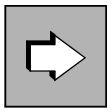This chapter provides a comprehensive overview of how to implement databases under openUTM.
The following systems are connected via the interface used for UTM-DB collaboration (IUTMDB):
UDS/SQL
SESAM/SQL
LEASY (the LEASY file system behaves like a database system with respect to openUTM)
CIS
The following systems are connected via the XA interface:
Oracle
In addition, openUTM can also work in conjunction with other database systems or be connected via the XA interface if they support the either interface IUTMDB interface or the XA interface.
Multi-DB operation
openUTM can work in coordination with up to three different types of database systems, i.e. a UTM transaction can contain calls to multiple database systems. Of the database systems that have requested update operations, only one may not support a “two-phase commit” protocol.
Coordinated interoperation between openUTM and the two DB systems "in a single multi-database application" is available for UDS/SQL and SESAM/SQL if the following interfaces are used in this case:
COBOL or Call-DML is used for calls to UDS/SQL
SQL for calls to SESAM/SQL
However, the UDS/SQL and SESAM/SQL systems cannot be combined in one application if SQL is used for calls to the UDS/SQL DB system.
Multi-DB operation with more than three database systems (maximal up to 8 DB systems) is possible on special release.
Further details on the concept of coordinated interoperation can be found in the openUTM manual “Concepts und Functions”. More information is available in the DB system manuals under the topic of UTM or openUTM, e.g. “UDS/SQL - Programming Applications” or “SESAM/SQL - Core Manual”. |

